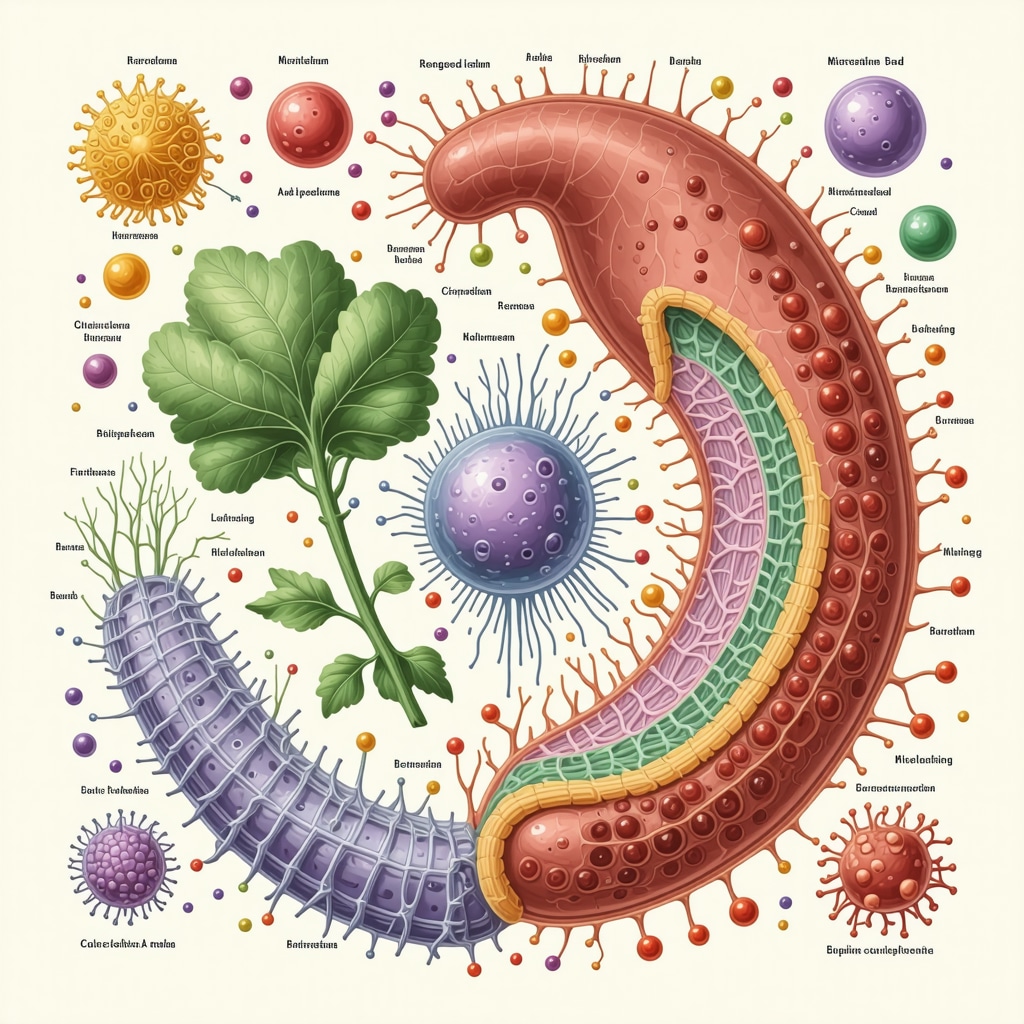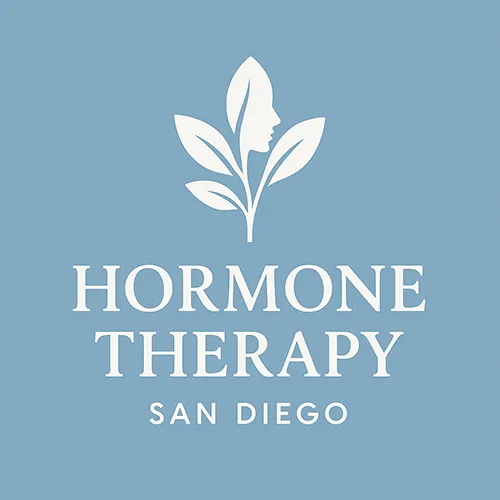Harnessing Nature’s Power: The Science Behind Herb-Based Hormone Optimization in San Diego
In an era where bioidentical hormone replacement therapies dominate the conversation around endocrine health, a nuanced approach that emphasizes natural hormone optimization using herbal compounds is gaining traction among San Diego’s health-conscious population. This method integrates centuries-old botanical wisdom with modern endocrinology, offering a sophisticated alternative that prioritizes holistic balance and minimal adverse effects. Understanding the complex biochemical pathways influenced by herbs such as Vitex agnus-castus, maca root, and ashwagandha reveals their potential to modulate hypothalamic-pituitary-adrenal (HPA) axis function and support endogenous hormone production, thereby fostering homeostasis.
Mechanistic Insights: How Herb-Based Therapies Influence Hormonal Homeostasis
Unlike synthetic hormone replacement, herb-based hormone balance therapies operate by engaging multiple physiological targets simultaneously. Adaptogenic herbs like ashwagandha influence cortisol regulation, mitigating stress-induced endocrine disruption, while phytoestrogens found in red clover and black cohosh exhibit selective estrogen receptor modulation, attenuating menopausal symptoms without the risks associated with conventional hormone therapy. These multifaceted interactions necessitate precise dosing and individualized protocols, underscoring the importance of expert clinical assessment and hormone testing in San Diego’s natural hormone optimization practices. Such rigor ensures efficacy while minimizing the risk of herb-drug interactions and hormonal imbalances.
What Are the Challenges and Considerations in Implementing Herb-Based Hormone Balance Protocols?
Implementing herb-based hormone optimization demands an intricate understanding of phytochemistry, pharmacodynamics, and patient-specific endocrinology. One challenge lies in the variability of bioactive constituents across herbal preparations, which can impact therapeutic consistency. Furthermore, the latency of therapeutic effects—often requiring weeks to months—differs markedly from the rapid symptom relief seen with conventional hormone replacement. Clinicians must also navigate regulatory constraints that affect herbal supplement quality control. For patients in San Diego, collaborating with certified hormone specialists ensures access to evidence-based protocols tailored to their unique hormonal milieu, integrating lifestyle modifications alongside botanical therapies to maximize outcomes.
Integrating Herb-Based Hormone Balance with Conventional Therapies: A Personalized Approach
Advanced hormone optimization in San Diego increasingly embraces a hybrid model, combining the precision of bioidentical hormone pellet therapy with the supportive role of herbal supplementation. This integrative strategy leverages the rapid normalization of hormone levels via pellet therapy while utilizing herbs to enhance adrenal resilience, modulate neurotransmitter activity, and support metabolic regulation. Such synergy exemplifies the future of endocrine care, emphasizing personalization, safety, and sustainability. Patients interested in exploring this holistic approach can benefit from expert guidance detailed at Hormone Balancing Therapy San Diego Personalized Solutions.
For those seeking to deepen their understanding of natural hormone therapies and contribute professional insights, we invite engagement with our expert community and exploration of advanced topics at Natural Hormone Therapy San Diego Holistic Wellness Strategies.
According to a comprehensive review published in Frontiers in Endocrinology, phytotherapy offers promising adjunctive benefits for hormone-related disorders, emphasizing the importance of clinical validation and individualized treatment planning.
Personalizing Herb-Based Hormone Therapies: The Role of Genetic and Metabolic Profiling
With the advancement of precision medicine, hormone optimization in San Diego now increasingly incorporates genetic and metabolic profiling to tailor herb-based therapies more effectively. Understanding individual variations in cytochrome P450 enzymes, estrogen receptor polymorphisms, and metabolic hormone clearance rates allows clinicians to predict responses to specific botanicals and customize dosing regimens. For example, patients with polymorphisms affecting estrogen metabolism may benefit more from selective phytoestrogens like red clover, while those with altered cortisol metabolism might respond optimally to adaptogens such as rhodiola or ashwagandha. This stratified approach not only enhances therapeutic efficacy but also minimizes adverse effects by aligning botanical interventions with the patient’s unique biochemical landscape.
Combining Lifestyle Interventions with Herbal Hormone Balancing: A Multidimensional Approach
Herb-based hormone optimization reaches its full potential when integrated with targeted lifestyle modifications. Dietary adjustments to increase omega-3 fatty acid intake, regular physical activity focusing on resistance training, and stress reduction techniques such as mindfulness meditation synergize with botanicals to restore endocrine harmony. For instance, reducing inflammatory dietary components can potentiate the anti-inflammatory effects of herbs like turmeric and holy basil, thus improving insulin sensitivity and supporting thyroid function. San Diego practitioners emphasize such multidimensional protocols to address the root causes of hormonal imbalance rather than merely alleviating symptoms, fostering sustainable wellness.
How Can Emerging Technologies Revolutionize Herb-Based Hormone Optimization in Clinical Practice?
The integration of digital health tools and wearable biosensors presents new frontiers for monitoring and optimizing herb-based hormone therapies. Continuous tracking of physiological markers such as heart rate variability, sleep patterns, and skin temperature can provide real-time feedback on stress and circadian rhythm disruptions, informing dynamic adjustments in herbal dosing and lifestyle interventions. Furthermore, artificial intelligence algorithms analyzing patient data can identify subtle endocrine trends, enabling preemptive modifications to therapy. In San Diego, forward-thinking clinics are beginning to pilot such technologies, merging traditional botanical wisdom with cutting-edge innovation to elevate personalized hormone care.
For patients and clinicians interested in exploring comprehensive hormone balancing that includes both herbal and conventional modalities, detailed guidance is available at Hormone Balancing Therapy San Diego Personalized Solutions. This resource provides expert insights into tailored protocols that accommodate individual hormonal profiles and lifestyle factors.
Moreover, engaging with the latest research and clinical best practices is essential. The Journal of Clinical Medicine offers a peer-reviewed analysis highlighting how integrative approaches combining phytotherapy and lifestyle interventions significantly improve outcomes in endocrine disorders, reinforcing the importance of evidence-based personalization.
If you found these insights valuable, please share your thoughts in the comments or share this article with colleagues seeking advanced hormone optimization strategies. To deepen your knowledge on natural hormone therapies and related cutting-edge developments, explore more at Natural Hormone Therapy San Diego Holistic Wellness Strategies.
Exploring the Pharmacokinetic Complexities of Herbal Constituents in Hormonal Modulation
The pharmacokinetics of herbal compounds used in hormone modulation is a multidimensional arena that demands rigorous scrutiny to optimize therapeutic outcomes. The absorption, distribution, metabolism, and excretion (ADME) profiles of bioactive phytochemicals such as lignans, flavonoids, and alkaloids are influenced by factors including gut microbiota composition, hepatic enzyme activity, and patient-specific genetic polymorphisms. For instance, the hepatic cytochrome P450 system, particularly CYP3A4 and CYP1A2 isoforms, metabolizes many herbal constituents, affecting systemic bioavailability and potential herb-drug interactions. Therefore, personalized assessments of metabolic capacity become imperative when integrating herb-based therapies with conventional medications.
How Do Gut Microbiota Variations Impact the Efficacy of Herbal Hormone Therapies?
The gut microbiome acts as a pivotal modulator of phytochemical bioactivation, impacting the efficacy of herb-based hormone therapies. Microbial enzymes can convert phytoestrogens like daidzein and genistein into more potent estrogenic metabolites such as equol, which exhibit higher affinity for estrogen receptors. Variability in microbial composition between individuals can thus result in differential therapeutic responses. Furthermore, dysbiosis associated with chronic inflammation or antibiotic use may attenuate these beneficial conversions, necessitating integrative strategies that include prebiotics, probiotics, and dietary modifications to restore microbial balance and optimize herbal hormone efficacy.
Emerging research from the Frontiers in Endocrinology highlights the intricate crosstalk between gut microbiota and endocrine function, underscoring the need for microbiome-informed personalization in botanical hormone therapies.
Innovations in Formulation Science: Enhancing Bioavailability of Herbal Hormone Modulators
One of the formidable challenges in herb-based hormone optimization lies in maximizing the bioavailability of active constituents. Recent advances in formulation technologies—such as nanoemulsions, liposomal encapsulation, and phytosome complexes—have demonstrated significant improvements in solubility, stability, and cellular uptake of herbal extracts. For example, liposomal delivery of ashwagandha extract enhances its adaptogenic efficacy by facilitating blood-brain barrier penetration and sustained release, thereby augmenting cortisol regulation. Similarly, phytosome formulations of curcumin potentiate its anti-inflammatory and endocrine-modulating properties by overcoming rapid hepatic metabolism.
Clinicians in San Diego are increasingly adopting these novel delivery systems to refine dosing precision and therapeutic consistency, integrating them within comprehensive hormonal balancing protocols.
What Are the Best Practices for Monitoring and Adjusting Herb-Based Hormone Treatments in Real Time?
Dynamic monitoring is critical to the success of herb-based hormone therapies, given the temporal latency and multifactorial influences on endocrine responses. Best practices involve serial assessments combining quantitative hormone panels, patient-reported outcome measures, and biometric data from wearable devices. Regular evaluation of serum levels of estradiol, progesterone, cortisol, and thyroid hormones provides objective markers for adjusting herbal dosages. Concurrently, symptom tracking apps enable real-time feedback on mood, energy, and sleep quality, facilitating nuanced titration. In San Diego, integrative clinics employ multidisciplinary teams including endocrinologists, naturopaths, and functional medicine practitioners to interpret this data holistically and guide therapy adjustments.
Synergistic Potential of Herb-Based Therapies with Neuroendocrine Modulation Techniques
Beyond biochemical modulation, herb-based hormone optimization can be potentiated by neuroendocrine interventions such as transcranial magnetic stimulation (TMS), biofeedback, and vagus nerve stimulation. These techniques influence hypothalamic regulation and autonomic nervous system balance, thereby enhancing the efficacy of adaptogenic and phytoestrogenic botanicals. For example, combining ashwagandha supplementation with vagal nerve stimulation may synergistically reduce HPA axis hyperactivity, improving resilience to stress-induced hormonal fluctuations. Integrating such modalities within San Diego’s personalized hormone optimization frameworks represents an avant-garde approach that transcends traditional paradigms.
Unraveling the Pharmacokinetic Intricacies of Herbal Hormone Modulators
Diving deeper into herb-based hormone optimization, it is crucial to appreciate the sophisticated pharmacokinetic processes governing bioactive phytochemicals such as lignans, flavonoids, and alkaloids. These compounds undergo complex absorption, distribution, metabolism, and excretion (ADME) pathways, intricately modulated by individual variations in gut microbiota, hepatic enzyme polymorphisms, and transporter proteins. For instance, cytochrome P450 enzymes, particularly CYP3A4 and CYP1A2, play pivotal roles in metabolizing herbal constituents, influencing both bioavailability and the spectrum of herb-drug interactions. This necessitates an advanced personalized approach to herbal hormone therapies, particularly in polypharmacy contexts common among San Diego patients.
How Does Gut Microbiota Influence the Biotransformation and Therapeutic Outcomes of Herbal Hormone Treatments?
The gut microbiome emerges as a critical determinant in the efficacy of herb-based hormone modulation by biotransforming phytoestrogens into metabolites with enhanced receptor affinity and bioactivity. For example, microbial conversion of daidzein to equol substantially elevates estrogenic potency, but interindividual variability in microbiota composition can lead to disparate clinical responses. Moreover, dysbiotic states, frequently exacerbated by antibiotics or inflammatory conditions, can impair these conversions. Integrative strategies incorporating prebiotic and probiotic interventions aim to restore microbial equilibrium, thereby optimizing phytochemical bioactivation and hormonal homeostasis. Cutting-edge findings published in Frontiers in Endocrinology elucidate this dynamic interplay, underscoring the need for microbiome-informed personalization in botanical hormone therapies.

Innovative Delivery Systems: Enhancing Bioavailability and Therapeutic Precision
Addressing the inherent challenges of low bioavailability in herbal compounds, recent formulation science breakthroughs—such as nanoemulsions, liposomal encapsulations, and phytosome complexes—have revolutionized delivery efficacy. These technologies improve solubility, protect against enzymatic degradation, and facilitate targeted tissue uptake. For instance, liposomal encapsulation of ashwagandha extracts enhances central nervous system penetration, thereby potentiating its adaptogenic effects on cortisol regulation. Similarly, phytosome formulations of curcumin significantly increase systemic availability, amplifying anti-inflammatory and endocrine modulatory actions. San Diego clinicians integrating these innovations report improved dosing accuracy and patient outcomes, marking a paradigm shift in herb-based hormone optimization protocols.
What Are the Best Practices for Dynamic Monitoring and Real-Time Adjustment in Herbal Hormone Therapies?
Given the latency and multifactorial influences inherent to botanical hormone treatments, continuous monitoring is paramount. Best practices encompass serial quantitative hormone profiling, comprehensive symptom tracking via validated patient-reported outcome measures, and biometric data collection through wearable biosensors. Parameters such as serum estradiol, progesterone, cortisol, and thyroid hormone concentrations provide objective biochemical insights, while real-time mood, energy, and sleep quality data facilitate nuanced dosage titration. Multidisciplinary teams—including endocrinologists, naturopathic doctors, and functional medicine specialists—collaborate to interpret these datasets holistically. This integrative framework enables personalized, responsive adjustments, ensuring maximal therapeutic efficacy and safety within San Diego’s advanced hormone optimization clinics.
Synergizing Herb-Based Therapies with Neuroendocrine Modulation: Charting New Therapeutic Frontiers
Beyond direct biochemical interventions, neuroendocrine modulation techniques such as transcranial magnetic stimulation (TMS), biofeedback, and vagus nerve stimulation can amplify the benefits of herb-based hormone therapies. These modalities influence hypothalamic-pituitary axis regulation and autonomic nervous system balance, thereby potentiating botanical adaptogens and phytoestrogens. For example, combining ashwagandha supplementation with vagal nerve stimulation synergistically attenuates HPA axis hyperactivity, enhancing resilience against stress-induced hormonal perturbations. Such integrative protocols, pioneered by San Diego’s leading hormone optimization centers, exemplify cutting-edge personalized medicine that transcends conventional therapeutic paradigms.
For clinicians and patients aiming to harness these sophisticated integrative strategies, detailed evidence-based protocols and expert consultations are accessible at Hormone Balancing Therapy San Diego Personalized Solutions. Engaging with this resource empowers stakeholders to navigate the complexities of herb-based hormone optimization with confidence and precision.
Further, authoritative peer-reviewed analyses such as those featured in the Journal of Clinical Medicine corroborate the clinical value of integrative phytotherapy combined with lifestyle and neuroendocrine interventions, reinforcing the imperative for evidence-based personalization.
If these advanced insights resonate with your clinical or personal hormone optimization journey, we encourage sharing your perspectives in the comments and disseminating this article among professionals committed to elevating endocrine health through natural, science-driven methodologies.
Expert Insights & Advanced Considerations
Integrating Genetic and Microbiome Profiles Enhances Therapeutic Precision
Emerging evidence underscores the necessity of incorporating individual genetic polymorphisms and gut microbiota composition into herb-based hormone optimization protocols. Tailoring botanical interventions according to cytochrome P450 enzyme variants and microbial capacity to metabolize phytoestrogens like daidzein to equol can markedly improve clinical outcomes and reduce variability in treatment responses.
Advanced Delivery Systems Are Transforming Bioavailability and Patient Compliance
Innovations such as liposomal encapsulation and phytosome complexes substantially increase the bioavailability of adaptogenic and phytoestrogenic herbs, facilitating more consistent systemic effects and enhancing patient adherence. These technologies are pivotal in overcoming traditional limitations of herbal therapies, enabling integration within sophisticated hormone balancing regimens.
Synergistic Neuroendocrine Modulation Offers a Multidimensional Treatment Paradigm
Combining herb-based hormone therapies with neuroendocrine interventions like vagus nerve stimulation and transcranial magnetic stimulation creates amplified effects on hypothalamic-pituitary-adrenal axis regulation. This synergy not only potentiates stress resilience but also optimizes hormonal homeostasis, representing an avant-garde frontier in personalized endocrine care.
Dynamic Monitoring Through Wearable Biosensors Enables Real-Time Therapy Adjustments
Leveraging continuous biometric data collection, including heart rate variability and sleep metrics, allows clinicians to fine-tune herbal dosing in response to fluctuating physiological states. This responsive approach addresses the inherent latency and complexity of botanical therapies, optimizing efficacy while safeguarding against adverse effects.
Collaborative Multidisciplinary Care Is Essential for Safe and Effective Implementation
Given the intricate pharmacokinetics, potential herb-drug interactions, and multifactorial influences on hormone balance, a team-based approach involving endocrinologists, naturopathic doctors, and functional medicine practitioners is critical. This collaboration ensures comprehensive assessment, precise dosing, and holistic support for patients pursuing herb-based hormone optimization.
Curated Expert Resources
Frontiers in Endocrinology: A leading open-access journal providing in-depth peer-reviewed articles on phytotherapy and endocrine modulation, invaluable for understanding the latest scientific advances in herbal hormone therapies (frontiersin.org).
Journal of Clinical Medicine: Offers comprehensive analyses on integrative hormone treatments combining phytotherapy, lifestyle, and neuroendocrine modalities, supporting evidence-based clinical decisions (mdpi.com/journal/jcm).
Hormone Balancing Therapy San Diego Personalized Solutions: An authoritative resource detailing customized protocols that merge conventional and herbal hormone optimization strategies, tailored for the San Diego population (Visit resource).
Natural Hormone Therapy San Diego Holistic Wellness Strategies: Offers expert insights into lifestyle integration, botanical supplementation, and advanced natural therapies for endocrine health enhancement (Explore here).
San Diego Bioidentical Hormone Specialists: What Sets Them Apart: A guide to selecting expert clinicians skilled in the nuanced application of both bioidentical hormones and herb-based therapies, ensuring safe and effective personalized care (Learn more).
Final Expert Perspective
Herb-based hormone optimization in San Diego is evolving into a sophisticated, precision-driven discipline that harmonizes botanical science with cutting-edge diagnostics and innovative delivery technologies. By embracing the complexity of individual genetics, microbiome diversity, and neuroendocrine dynamics, clinicians can craft personalized regimens that transcend traditional hormone replacement paradigms. This approach not only mitigates risks related to herb-drug interactions and inconsistent bioavailability but also fosters sustainable endocrine balance through integrative lifestyle strategies and real-time monitoring. Professionals and patients alike are encouraged to engage deeply with these advanced methodologies, leveraging expert resources and multidisciplinary collaborations to unlock the full potential of natural hormone optimization. For those ready to explore this frontier further, connecting with specialized hormone optimization clinics in San Diego can provide the tailored guidance necessary for transformative endocrine health journeys. Consider beginning your exploration with comprehensive insights found at Hormone Balancing Therapy San Diego Personalized Solutions and extend your understanding through related advanced topics like Natural Hormone Therapy San Diego Holistic Wellness Strategies.

